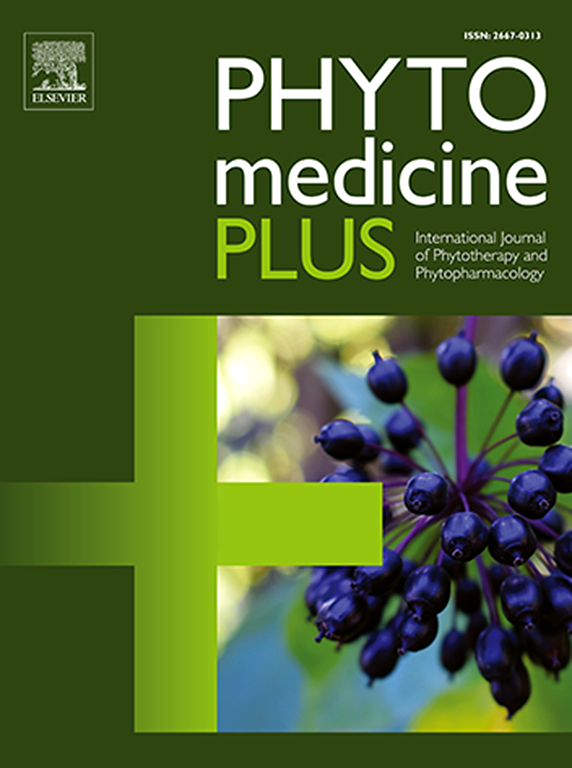Linear pyranocoumarins are potential dazzling dancers between nature, chemistry, and clinical application
Q3 Pharmacology, Toxicology and Pharmaceutics
引用次数: 0
Abstract
Angelica gigas Nakai, Angelica decursiva, and other healing plants have secondary metabolites called natural linear pyranocoumarins (N-PYCs) that are very uncommon. As anticancer, antidiabetic, antioxidant, antimicrobial, anti-inflammatory, and neuroprotective agents, they have different effects on biological, toxicological, and ecological systems. Despite their potential advantages, research on these N-PYCs is scarce and necessitates additional evaluation of their pharmacological applications. The goal of this study is to find out more about how N-PYCs are biosynthesized, what their structural features are, and how they can be used in medicine to treat cancer, scavenge free radicals, help people with diabetes, treat microbial infections and inflammation, and protect neurons. We conducted a search on N-PYCs using some scientific platforms, such as Google Scholar, PubMed, Web of Science, Scopus, and Google, as well as analyzing 173 papers published between 2000 and 2024. We also looked at how N-PYCs work, how their structure affects their activity, and their therapeutic potential. The findings show that these natural products have the function to treat a wide range of illnesses. For instance, they have been shown to fight cancer by inducing apoptosis, and their antioxidant activity is achieved by lowering the production of reactive oxygen species inside cells. Also, N-PYCs work well against diabetes mellitus by mitigating glucose absorption and lowering oxidative stress. Furthermore, they achieved the anti-inflammatory effect by inhibiting the induction of inflammatory mediators. Lastly, they showed strong antimicrobial activity and interesting MICs, in addition to protecting neurons from damage. This study highlights the crucial importance of N-PYCs in medicinal chemistry and drug development. These natural products have potential for use in medicine because they can easily undergo structural modification and perform a variety of biological functions. However, more research is needed to go from studying them in nature to using them in medicine.

线性吡喃香豆素是自然界、化学和临床应用之间潜在的耀眼舞者
当归、白芷和其他治疗植物具有次生代谢产物,称为天然线性吡喃香豆素(N-PYCs),这是非常罕见的。作为抗癌、降糖、抗氧化、抗菌、抗炎和神经保护剂,它们在生物、毒理学和生态系统中具有不同的作用。尽管它们具有潜在的优势,但对这些N-PYCs的研究很少,需要对其药理应用进行额外的评估。这项研究的目的是发现更多关于N-PYCs是如何生物合成的,它们的结构特征是什么,以及它们如何在医学上用于治疗癌症,清除自由基,帮助糖尿病患者,治疗微生物感染和炎症,以及保护神经元。我们利用谷歌Scholar、PubMed、Web of Science、Scopus和谷歌等科学平台对N-PYCs进行了检索,并分析了2000 - 2024年间发表的173篇论文。我们还研究了N-PYCs是如何工作的,它们的结构如何影响它们的活性,以及它们的治疗潜力。研究结果表明,这些天然产物具有治疗多种疾病的功能。例如,它们已被证明通过诱导细胞凋亡来对抗癌症,它们的抗氧化活性是通过降低细胞内活性氧的产生来实现的。此外,N-PYCs通过减轻葡萄糖吸收和降低氧化应激对糖尿病有很好的作用。此外,它们通过抑制炎症介质的诱导来达到抗炎作用。最后,除了保护神经元免受损伤外,它们还显示出强大的抗菌活性和有趣的mic。这项研究强调了N-PYCs在药物化学和药物开发中的重要作用。这些天然产物具有潜在的医学用途,因为它们可以很容易地进行结构修饰并发挥各种生物功能。然而,从在自然界中研究它们到在医学上使用它们还需要更多的研究。
本文章由计算机程序翻译,如有差异,请以英文原文为准。
求助全文
约1分钟内获得全文
求助全文
来源期刊

Phytomedicine Plus
Medicine-Complementary and Alternative Medicine
CiteScore
3.70
自引率
0.00%
发文量
178
审稿时长
81 days
期刊介绍:
 求助内容:
求助内容: 应助结果提醒方式:
应助结果提醒方式:


